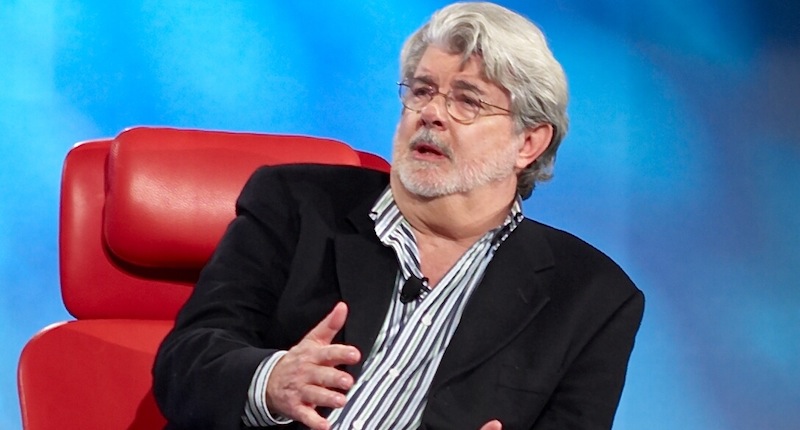“Star Wars” creator George Lucas has submitted plans to the Marin County (Calif.) Development Agency to build 224 units of affordable workforce and senior housing on 52 acres at Grady Ranch.
This proposal is the latest broadside in an ongoing battle between Lucas and residents of this affluent neighborhood who, in the past, have blocked Lucas’s efforts to expand his production company, Lucasfilms. Two years years ago, Lucas also encountered opposition to his plan to sell land at Grady Ranch to a developer for affordable housing.
Lucas, who has owned land in Marin County since 1978 (that property is called Skywalker Ranch), said he would build the housing himself, but that project lost its financial backing in 2013. The Marin Independent Journal reported at the time that the costs for the project would fall somewhere between $120 million and $150 million.
Now, Lucas—whom Forbes estimates is worth $5.1 billion—says he will finance 100% of the housing project, according to Gary Giacomini, former county supervisor and an attorney for Skywalker Properties.
The initial reactions to Lucas’s latest proposal have been mixed, with one local supervisor worrying about the “cumulative impact” of a project that large on the community. Other supervisors see the proposal as an opportunity to make a dent in the county’s shortage of affordable housing. Thomas Peters, CEO of the Marin Community Foundation, called Lucas’ plan an “extraordinary offer” that underscores the filmmaker’s commitment to the housing needs of the vibrant workforce that drives the region’s vitality. (Ironically, the Foundation was the financial backer that bailed on Lucas’s housing plans two years ago.)
Lucas’s proposal call for 120 two- and three-bedroom workforce rental homes in one four-story cluster and two two-story clusters. There would also be 104 one- and two-bedroom residences for seniors in a four-story cluster, according to the Independent Journal. Zoning at Grady Ranch allows for up to 324 homes at this site, which is where Lucas had originally intended to expand his studio facilities.
The architect for this project is Robert W. Hayes of Sausalito, and the project is being coordinated and managed by PEP Housing of Petaluma, which developed Toussin Senior Apartments, an affordable complex that Hayes had designed.
Applicants for the workforce housing need to be earning less than 80% of the market’s median household income. The seniors applying for housing need to fall within 30% and 60% of that median. Quoting Census estimates, the Washington Post reports that 7.7% of the county’s residences live below its $90,839 median income level.
Related Stories
Mixed-Use | Oct 7, 2024
New mixed-use tower by Studio Gang completes first phase of San Francisco waterfront redevelopment
Construction was recently completed on Verde, a new mixed-use tower along the San Francisco waterfront, marking the end of the first phase of the Mission Rock development. Verde is the fourth and final building of phase one of the 28-acre project that will be constructed in several phases guided by design principles developed by a design cohort led by Studio Gang.
MFPRO+ News | Sep 24, 2024
Major Massachusetts housing law aims to build or save 65,000 multifamily and single-family homes
Massachusetts Gov. Maura Healey recently signed far-reaching legislation to boost housing production and address the high cost of housing in the Bay State. The Affordable Homes Act aims to build or save 65,000 homes through $5.1 billion in spending and 49 policy initiatives.
MFPRO+ News | Sep 23, 2024
Minnesota bans cannabis smoking and vaping in multifamily housing units
Minnesota recently enacted a first-in-the-nation statewide ban on smoking and vaping cannabis in multifamily properties including in individual living units. The law has an exemption for those using marijuana for medical purposes.
The Changing Built Environment | Sep 23, 2024
Half-century real estate data shows top cities for multifamily housing, self-storage, and more
Research platform StorageCafe has conducted an analysis of U.S. real estate activity from 1980 to 2023, focusing on six major sectors: single-family, multifamily, industrial, office, retail, and self-storage.
Mixed-Use | Sep 19, 2024
A Toronto development will transform a 32-acre shopping center site into a mixed-use urban neighborhood
Toronto developers Mattamy Homes and QuadReal Property Group have launched The Clove, the first phase in the Cloverdale, a $6 billion multi-tower development. The project will transform Cloverdale Mall, a 32-acre shopping center in Toronto, into a mixed-use urban neighborhood.
Codes and Standards | Sep 17, 2024
New California building code encourages, but does not mandate heat pumps
New California homes are more likely to have all-electric appliances starting in 2026 after the state’s energy regulators approved new state building standards. The new building code will encourage installation of heat pumps without actually banning gas heating.
Adaptive Reuse | Sep 12, 2024
White paper on office-to-residential conversions released by IAPMO
IAPMO has published a new white paper titled “Adaptive Reuse: Converting Offices to Multi-Residential Family,” a comprehensive analysis of addressing housing shortages through the conversion of office spaces into residential units.
MFPRO+ Research | Sep 11, 2024
Multifamily rents fall for first time in 6 months
Ending its six-month streak of growth, the average advertised multifamily rent fell by $1 in August 2024 to $1,741.
Legislation | Sep 9, 2024
Efforts to encourage more housing projects on California coast stall
A movement to encourage more housing projects along the California coast has stalled out in the California legislature. Earlier this year, lawmakers, with the backing of some housing activists, introduced a series of bills aimed at making it easier to build apartments and accessory dwelling units along California’s highly regulated coast.
MFPRO+ New Projects | Sep 5, 2024
Chicago's Coppia luxury multifamily high-rise features geometric figures on the façade
Coppia, a new high-rise luxury multifamily property in Chicago, features a distinctive façade with geometric features and resort-style amenities. The 19-story, 315,000-sf building has more than 24,000 sf of amenity space designed to extend resident’s living spaces. These areas offer places to work, socialize, exercise, and unwind.

















